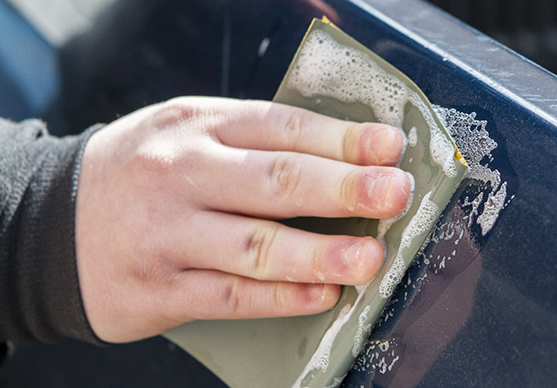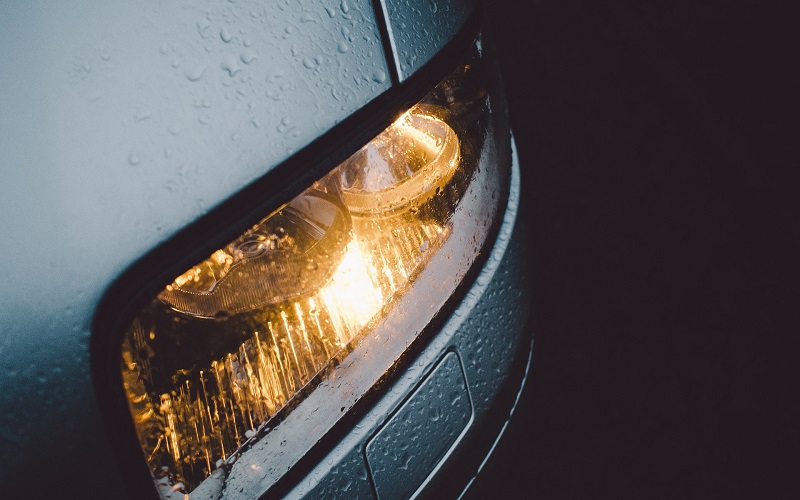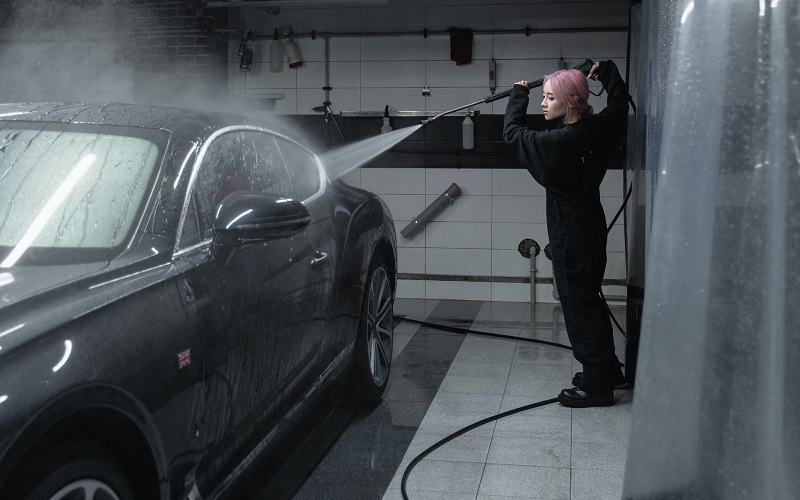Fixing and maintaining the appearance of a vehicle requires time and dedication. One solution works to eliminate damage from the exterior – sanding. From scratches to rust spots, this clears away the issues caused by the normal wear and tear on your car. However, most people lack the proper knowledge to successfully erase exterior problems. This article walks through the process and teaches everyone how to sand a car properly.
.
How to Sand a Car – A Beginner’s Guide
First, you need to choose what type of grit sandpaper you need. With the numerous fixes, there are a variety of choices. For example, if you want to remove a scratch from the clear coat, a 1000-grit sandpaper works well. It doesn’t require a completely rough surface because you are working to erase the surface damage.
However, if you want to fix rust spots on your vehicle, a tougher grit might be required. Most people use anywhere from 80-120 grit to work on rust. This leaves behind a rough finish due to the strength of the paper.
How to Sand a Car – General Steps
Whether you are fixing a crack in a gel coat or rust spots on the body, the set-up for sanding is the same for each process. First, clean the area thoroughly to ensure no dirt or grime lingers behind. Isolate the scratch/spot by applying masking tape to separate the surrounding area. Overall, no matter what the problem is, always start by cleaning and sectioning off the damaged area.
Car Headlights
Most people want clear headlights when they drive down the road, especially with extreme conditions. Knowing how to sand a car is important, and that includes the lights. After you have sectioned off the plastic from the rest of the vehicle, use grit sandpaper to smooth away the grime. Using small, circular motions ensures you cover the entire light, and remove the film successfully.
Erasing Scratches
One of the easiest problems to remove from the exterior paint is scratches. Learning how to a sand a car properly becomes simple when working with small amounts of damage. However, surface scratches require a wet-sanding method. Using a wet 3000-grit sandpaper, gently move in a circle over the scratch, rubbing until the damage disappears. If the scratch remains, it might be best to let a professional handle this type of exterior problem.
Boat Gel Coat Repair
Gel coats protect a boat from the conditions of the water and weather. It acts as a barrier between the elements and the exterior paint. However, there are times when a chip or crack might develop in the protective coat. Wet-sanding the damage in the gel coat with medium grit sandpaper will smooth out the surface. Despite the fix, boat owners might have to fill in the crack with a similar paste to prevent the layer from cracking again.
Unsightly Rust Spots
Fixing rust spots tends to be one of the most difficult exterior fixes. Understanding how to sand a car with rust falls under a more experienced category. Once you have prepped the area, use a 120 grit wheel until you get a smooth surface. The bare metal should be visible within the area you sanded.
To continue the process, use a rust remover and sand the area with 80 – 150 grit sandpaper to completely eliminate any spots remaining. Creating an indent in the metal and utilizing a body filler allows you to restore the exterior to its former finish. Adding body filler requires sanding to occur between each layer to smooth down the surfaces. The same process is used when re-applying the exterior paint and clear coat as well.
A professional knows how to sand a car to eliminate all types of damage. DetailXPerts, an eco-friendly, mobile auto detailing company performs specialty detailing, working on scratches, headlight restoration, and other damages. Schedule an appointment today for a consultation and let our highly-trained technicians restore your car.
Enjoyed this post? Sign up for our newsletter to receive more valuable tips, ideas, coupons, and extras!





